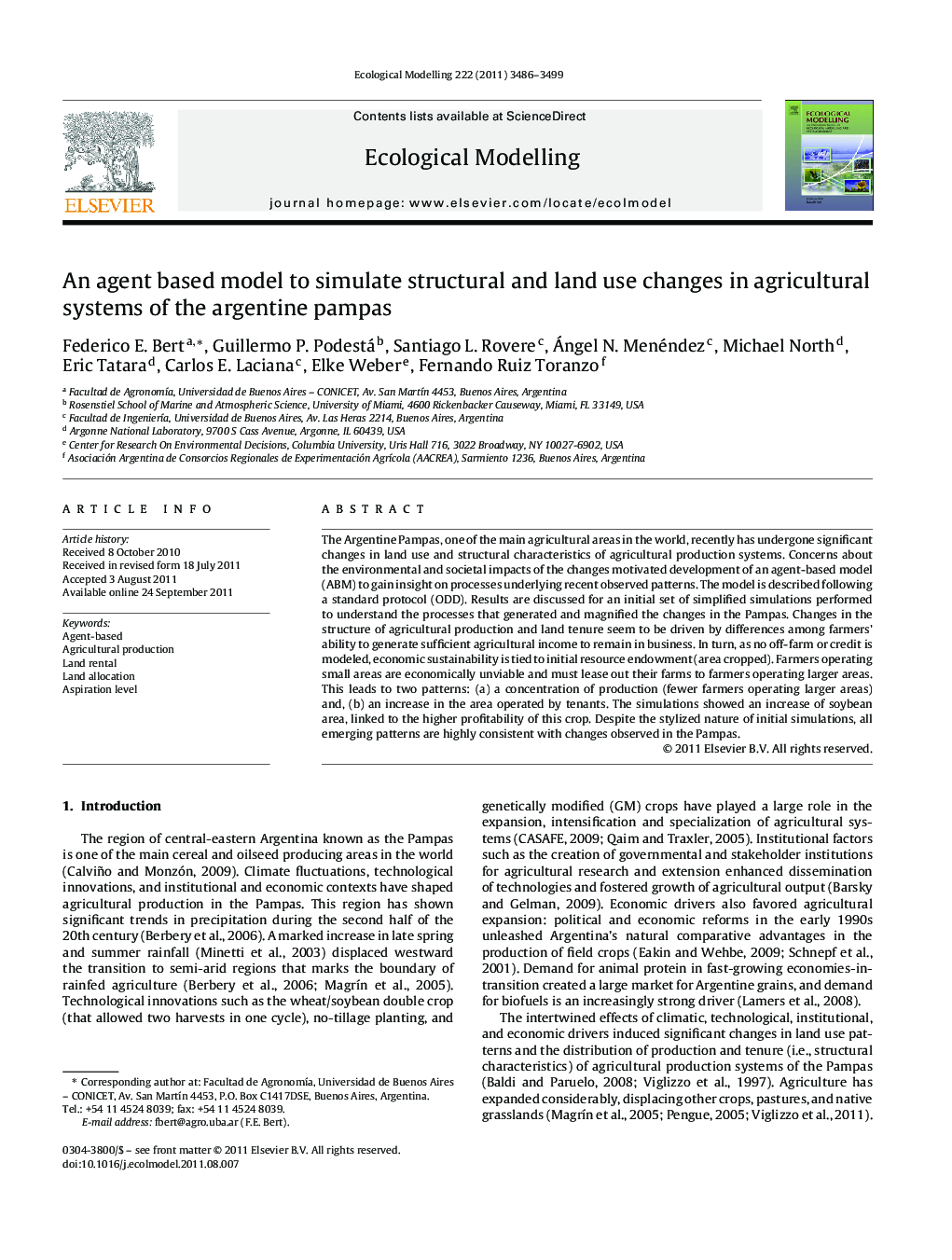| Article ID | Journal | Published Year | Pages | File Type |
|---|---|---|---|---|
| 4376807 | Ecological Modelling | 2011 | 14 Pages |
The Argentine Pampas, one of the main agricultural areas in the world, recently has undergone significant changes in land use and structural characteristics of agricultural production systems. Concerns about the environmental and societal impacts of the changes motivated development of an agent-based model (ABM) to gain insight on processes underlying recent observed patterns. The model is described following a standard protocol (ODD). Results are discussed for an initial set of simplified simulations performed to understand the processes that generated and magnified the changes in the Pampas. Changes in the structure of agricultural production and land tenure seem to be driven by differences among farmers’ ability to generate sufficient agricultural income to remain in business. In turn, as no off-farm or credit is modeled, economic sustainability is tied to initial resource endowment (area cropped). Farmers operating small areas are economically unviable and must lease out their farms to farmers operating larger areas. This leads to two patterns: (a) a concentration of production (fewer farmers operating larger areas) and, (b) an increase in the area operated by tenants. The simulations showed an increase of soybean area, linked to the higher profitability of this crop. Despite the stylized nature of initial simulations, all emerging patterns are highly consistent with changes observed in the Pampas.
► We present an agent-based model of agricultural systems in the Argentine Pampas. ► The model is intended to understand structural and land use changes in the Pampas. ► We provide an overview and details of the model following the ODD protocol. ► We discuss results from an initial set of simplified simulations.
